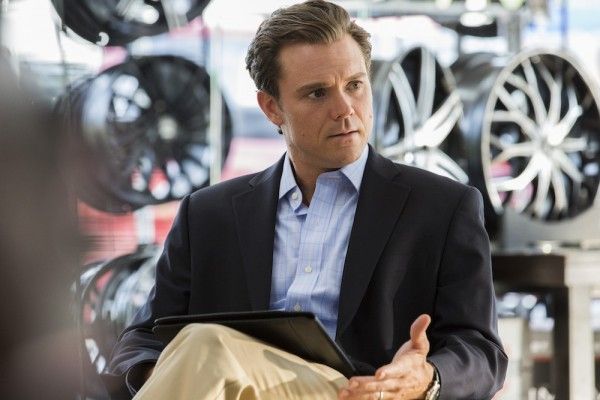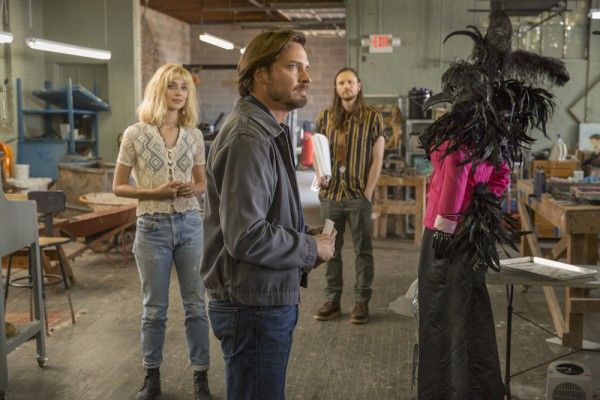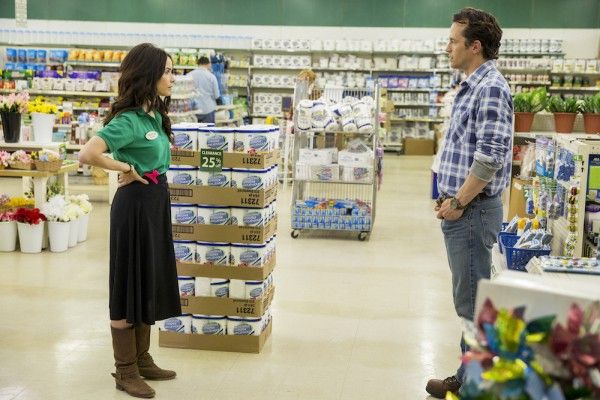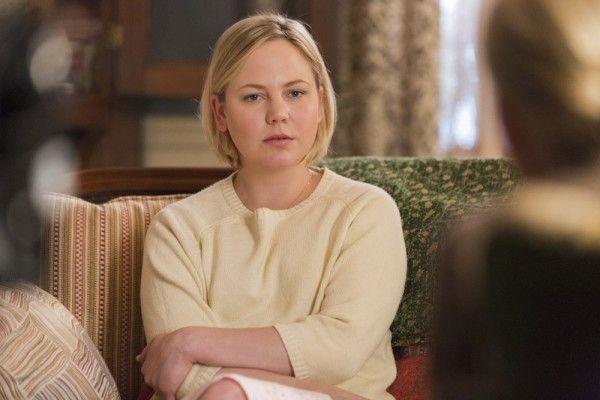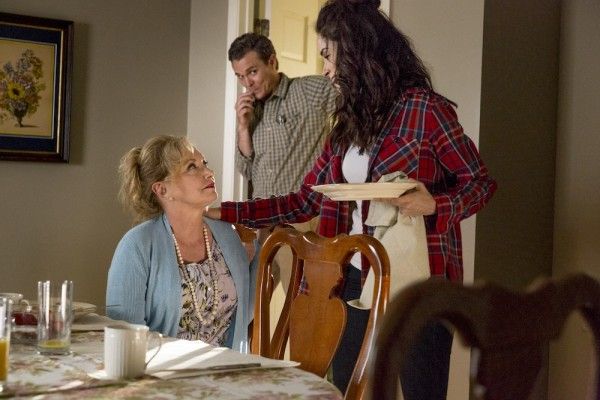In the past, the best example of why awards like the Emmys and the Golden Globes don’t matter as an indicator of great TV was The Wire, which may be the greatest series of all time and one of the most important social documents of the 2000s. Yet it was also, notably, never won a major award, and was only nominated twice (for writing). Rectify has had a similar story — it won a Peabody, but has never even been nominated in any category by any major award giver — though will not likely have the kind of popular resurgence The Wire did. But it should not be forgotten, because it too is among the gold standard of television series. It was one of the first in a new wave of Slow TV, and (crucially, in my opinion) of TV shows set in the South that dispensed with stereotypes. It told a story that was achingly real with a beautiful, thoughtful style and meditative tone. And though the advent of its series finale has been distressing to its dozens of fans (I say with only mild hyperbole), what creator Ray McKinnon gifted to us, and to Daniel, was much-needed hope for what’s next for these beloved characters.
It was Amantha who got to say the words — that nothing could ever rectify what had been done to her brother and to her family, or to Hanna Dean — and yet, Rectify’s series finale was one filled with hope for the future. When Season 3 ended with Daniel banished from Georgia and starting life in the halfway house New Canaan, the tone was uncertain. Daniel never got to leave home voluntarily when he was 18, and even now he still wasn’t leaving Paulie of his own volition. But what Season 4 explored was just how necessary that separation was in order for both Daniel and his family to figure out what’s next.
In that way, Season 4 was like an extended coda, where we got some reassurance that, yes, everything will probably be ok. The events of Rectify’s four seasons take place over the course of a year or less, but time has always been established by the series as an inexact thing, especially for Daniel. He wasn’t the only one who spent almost two decades in a haze - his family did as well. The story of them coming together was at the heart of the first three seasons, and yet, it was also something that never quite fit and was never quite comfortable. Season 4 embraced this heartbreaking truth but also gave it a comfortable conclusion
“All I’m Sayin” allowed for as much closure as made sense for Daniel’s story, and it was gratifying to see him get a wonderful conversation with Amantha, as well as reaching an accord with Teddy, and even reconnecting briefly with Tawney. Yet none of it was in person; all season Daniel has been removed, and yet, it’s helped him grow. He’s had to find his own way and start back with the life that he was robbed of for two decades. It’s been slow-going, and the most telling scene was at New Canaan where Daniel vents his frustrations over whether these meagre accomplishments are as good as his life will get. But then he’s reminded (in a way that is never patronizing, only true) that he’s entering into a new stage: when was the last time he was frustrated because he had dared to hope for something?
Since his release, Daniel has been free-floating through his life, rediscovering simple things alongside far more complicated and darker ones. He looked at so many things with a childlike innocence that occasionally brought joy to those around him, but more often his strange, reserved, off-putting mannerisms kept him apart. He’s not a child, but a man and technically a convict. In Season 4 he found an artist community who accepted him as one of their misfits, and he even eventually found his place within New Canaan. Through those experiences, he began to find himself. Daniel didn’t choose to leave Georgia, but he can (eventually, in seems) choose to come back. “It would be nice to visit,” he says twice over the course of the finale, suggesting that he wouldn’t want to return permanently — at least, not to Paulie. Instead, the final image is the first where we see him looking forward instead of back in his reveries: he imagines himself with Chloe and her baby, a warm and beautiful embrace.
Though Daniel’s story had its own kind of "cautiously optimistic" closure, some viewers may have been disappointed that the truth of Hanna’s murder was never fully revealed or solved. But frankly, most of Season 4 and “All I’m Sayin” gave us what we needed to surmise the truth, regardless of the legal outcome. When Rectify first premiered I thought that the truth of the incident would be necessary to the story, but as it unfolded it was clear it wouldn’t be, and shouldn’t be. Season 3, I thought, put a little too much emphasis on it to then retreat into ambiguity again, but it also followed Rectify’s desire to document the real — it was an incident 20 years old, with the details lost to time. As Rectify showed us over and over again, memory and experience are tricky things. But with the reopening of the inquiry, a public declaration that Daniel was unlikely to have committed the crime, and a few final shots of Trey (who had lost everything, rightfully it feels) still trying to manipulate the situation while Chris Nelms seems shaken by the latest news of the case, an approximation of the truth seems pretty clear.
Ultimately, the objective details of that night aren’t important, because the story was always about Daniel’s experience in the now. In Season 2 in particular, the show challenged viewers to consider whether it mattered to us whether or not Daniel committed this crime. For me, personally, it did. Even though it was an interesting thought exercise to consider Daniel’s Schrodinger’s guilt, it felt like something that did need, narratively, to be resolved. But any lingering doubts one might still have were surely put to rest with the conclusion of the series, though for most of us it happened long before.
Daniel’s story has also been the story of his family, though, and with him removed to Nashville for the season, the vacuum that created ended up leading each to their own freedom. Janet did have to be told to let go, by Daniel, for her own sake. But she also understood what Hanna's mother was going through in holding on to Hanna by keeping her room exactly the same. Amantha let Jon go for both of them, and chose to embrace Paulie (for now) as well as an unexpected Paulie resident from her past (Amantha also getting to hear Janet tell her she's her hero was a spectacular moment). And that’s what’s key: she can continue to choose. As she admitted to her mother, one of the reasons why she fought so hard to get Daniel released was so that their family could be whole again. Things can never go back to how they were, but they can change. The point is now they can all change things how they want to.
That has meant more for Teddy’s story than most. He’s still a little bit of a mess, and his home life is complicated, but as a person, Teddy has changed almost completely from the one we met in Season 1. His phone conversation with Daniel, and then handing the phone over to Tawney, weren’t just for show — he’s gone through a sea change over the course of the series to be less selfish and more giving (and forgiving). He still has a long way to go, and he hasn’t been helped much by the milquetoast Tawney, a character I have never liked and feel was probably the most unevenly written (aside from poor, forgotten Jared), especially regarding her faith. If there was an Achilles Heel to the show it was Tawney, even though she did have some deeply affecting scenes in this last season. But when it came to her relationship with Teddy, he’s the one who ended up — rather shockingly — as the one to be the most proud of.
All of this forward motion was fantastic to witness and very well-earned, but aside from the Talbots and Holdens enjoying a meal together with genuine happiness, the best scene was one that was tied to the past. Rectify’s greatest strength, which is a difficult thing to assess since it does so many things so well, has been in exploring Daniel’s experiences on Death Row. His friendship with Kerwin was the most affecting of the series, and for Rectify to return to that in “All I’m Sayin” felt very right. Though it began with Daniel explaining in therapy about how it felt the day Kerwin was taken for his execution, and how he conveyed to Daniel that he believed in him (which almost brought me to tears), we later saw a scene where Kerwin bolstered Daniel’s spirit in other ways. In their cell blocks, Kerwin coaxes Daniel to tell him about a place he’d rather be, and the two end up each personally miming a trip in an old Cadillac through New York City. It’s funny, sad, beautiful, and raw. That was Rectify. And it will be missed.


